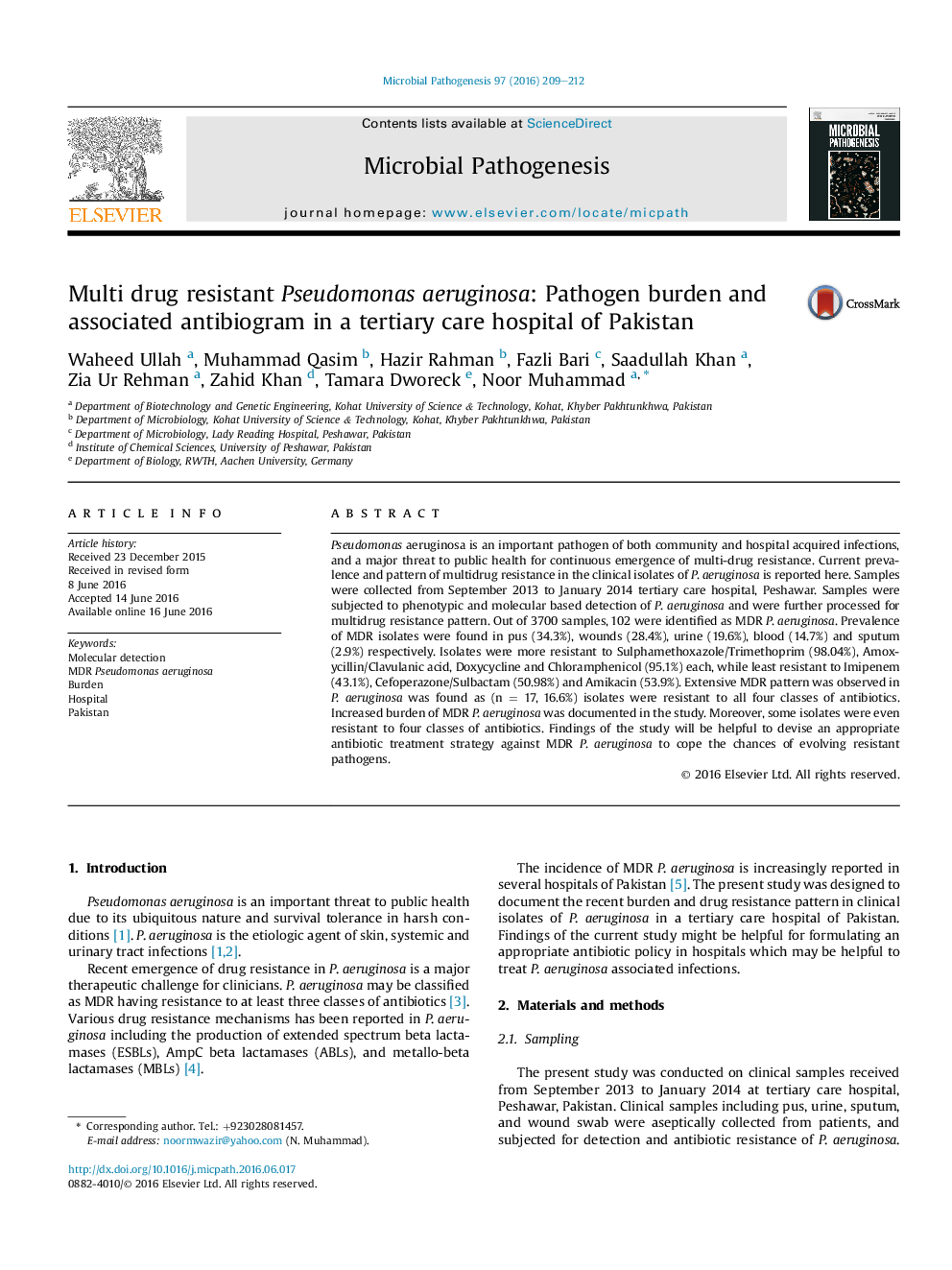| Article ID | Journal | Published Year | Pages | File Type |
|---|---|---|---|---|
| 6136194 | Microbial Pathogenesis | 2016 | 4 Pages |
Abstract
Pseudomonas aeruginosa is an important pathogen of both community and hospital acquired infections, and a major threat to public health for continuous emergence of multi-drug resistance. Current prevalence and pattern of multidrug resistance in the clinical isolates of P. aeruginosa is reported here. Samples were collected from September 2013 to January 2014 tertiary care hospital, Peshawar. Samples were subjected to phenotypic and molecular based detection of P. aeruginosa and were further processed for multidrug resistance pattern. Out of 3700 samples, 102 were identified as MDR P. aeruginosa. Prevalence of MDR isolates were found in pus (34.3%), wounds (28.4%), urine (19.6%), blood (14.7%) and sputum (2.9%) respectively. Isolates were more resistant to Sulphamethoxazole/Trimethoprim (98.04%), Amoxycillin/Clavulanic acid, Doxycycline and Chloramphenicol (95.1%) each, while least resistant to Imipenem (43.1%), Cefoperazone/Sulbactam (50.98%) and Amikacin (53.9%). Extensive MDR pattern was observed in P. aeruginosa was found as (n = 17, 16.6%) isolates were resistant to all four classes of antibiotics. Increased burden of MDR P. aeruginosa was documented in the study. Moreover, some isolates were even resistant to four classes of antibiotics. Findings of the study will be helpful to devise an appropriate antibiotic treatment strategy against MDR P. aeruginosa to cope the chances of evolving resistant pathogens.
Related Topics
Life Sciences
Immunology and Microbiology
Microbiology
Authors
Waheed Ullah, Muhammad Qasim, Hazir Rahman, Fazli Bari, Saadullah Khan, Zia Ur Rehman, Zahid Khan, Tamara Dworeck, Noor Muhammad,
